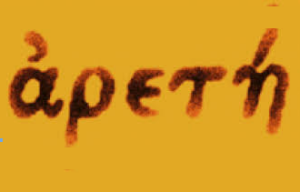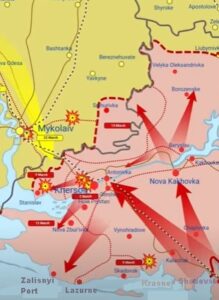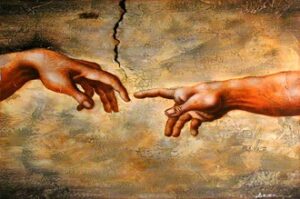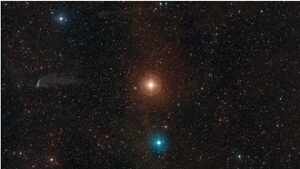
Arquivo para a ‘Information Science’ Categoria
The Other, the Infinite and the Truth
The development of the question of Being in modern philosophy is not separated from the religious question, Gadamer recalls the example of the gods in works of art from the Greek world (Gadamer, 1997, p. 18),
from the religious question, Gadamer recalls the example of the gods in works of art from the Greek world (Gadamer, 1997, p. 18),
The other is treated in different areas of ontology, becoming almost an essential category.
Another important point on the path to Truth, states that it is necessary to recognize: “The finitude of understanding itself is the way in which and where reality, resistance, the absurd, and incomprehensible reaches validity.” (Gadamer, 1997, p.24), and expands this history to the historical one, where he criticizes Dilthey’s romantic historicism and emphasizes that it is not ahistorical.
Thus, the path (or the method) to the Truth is traced the development of the hermeneutic circle as a new and revolutionary method for the Truth, listening to the text (or the Other) and performing a fusion of horizons, where it is possible to see and rethink more clearly the Truth.
The simple elaboration of narratives that justify the power of certain truths is nothing more than a return to the obscurity and opportunism of the modern sophist discourse, now using as a resource the limits and specialties of certain sciences, for example, law and economics that seen in their restricted fields are nothing but sophisms that justify each other.
When analyzing the possibility of the end of metaphysics, Gadamer points out: “If science rises to total technocracy, and thereby covers the sky with the “night of the world” of “forgetfulness of being”, the nihilism predicted by Nietzsche, may if then you keep looking behind the last glint of the sun that went down […]” (GADAMER, 1997, p.27), that is, science is not part of this question.
A true humanism must look to the infinite, not just the one that is now visible through the James Webb megatelescope (which raises many questions as well), it cannot fail to ignore the infinite, the mystery and the religious phenomenon.
For Christians, this truth was revealed humanly and visibly in Jesus, last week we remember the disciples saying “Show us the Father” (Jn 14:8), now on another front Jesus reveals himself more fully to those who follow him (Jn 14:8). 14, 16-17): “And I will pray the Father, and he will give you another Advocate, that he may abide with you always: the Spirit of Truth, which the world is not able to receive, because it neither sees him nor knows him” .
This is not an arrogant Truth, it can and must dialogue with the cultures of our time.
Gadamer, H.G. (1997) Verdade e método. Transl. Flávio Paulo Meurer. Brazil: Petrópolis, RJ: ed. Vozes.
The fundamental question of the method
The historical question could not be missing, in fact before the book “The truth and method”, it was a lecture by Gadamer that started this work, called “The question of historical conscience”, the book was corrected and translated into English after publication of the masterpiece, and from this version came the Portuguese version.
and method”, it was a lecture by Gadamer that started this work, called “The question of historical conscience”, the book was corrected and translated into English after publication of the masterpiece, and from this version came the Portuguese version.
Thus the author states: “Because, only with the failure of the naive historicism of the historical century, it becomes evident that the opposition that exists between a-historical-dogmatic and historical, between tradition and historical science, between ancient and modern, is not absolute.” (GADAMER, 1997, p.22).
So it is in the face of this finitude of knowledge that one must depart: “The finitude of understanding itself is the way in which and where reality, resistance, the absurd, and the incomprehensible reaches validity. Anyone who takes this finitude seriously must also take the reality of history seriously” (Gadamer, 1997, p.24), and from there he resumes and reorganizes the hermeneutic circle.
Thus, what he calls effectual history starts from the understanding of “what makes the experience of you so decisive for all self-understanding” (idem), it will be from there that he will elaborate his philosophical hermeneutics, which seems paradoxical, he states: “precisely Heidegger’s critique to transcendental questioning and his thought of the “turn” (Kehre) serves as a basis for the development of the universal hermeneutic problem, which I undertake” (Gadamer, 1997, p.25), and thus for him “language does not arise in the consciousness of those who speaks” and has nothing to do with subjectivity, since the subject’s experience has nothing “mystical” or “mystifying”.
He clarifies that his methodology goes beyond a purely metaphysical view, and says about the method of idealism: “I think that Kant’s Critique of Pure Reason is binding, and that propositions that do nothing more than add, by thought, and dialectically, the infinite to the finite, the being in itself to what is humanly experienced, the eternal to the temporal, I consider them as mere extreme determinations, from which, by the strength of philosophy, no knowledge of our own will be able to develop. (GADAMER, 1997, p.26).
With regard to metaphysics, he clarifies that even the Hegelian tradition, which does not abandon the idea of infinity, has: “the tradition of metaphysics and especially its last great formulation, Hegel’s speculative dialectic, contains a constant proximity.” (idem).
And he resumes Heidegger’s question of the oblivion of being: “What does the end of metaphysics mean, as a science? What does it mean to finish in science? If science rises to total technocracy, and thereby covers the sky with the “night of the world” of the “oblivion of being”, the nihilism predicted by Nietzsche, then one can look behind the last glint of the sun that has set […]” (GADAMER, 1997, p.27).
The opening to the Other opens up a perspective of merging the horizons of the Being, which applies a new meaning to the text (or discourse) and allows one to question oneself about the truth and reach it, this is the hermeneutic circle.
Gadamer, H.G. (1997) Verdade e método. Transl. Flávio Paulo Meurer. Brazil: Petrópolis, RJ: ed. Vozes.
Truth and Hermeneutics
It was Hans-Georg Gadamer who developed and founded a deeper criterion for  making a correct interpretation of method and truth (the name of his two-volume book) in the human sciences, and it is not about opposing the natural sciences, but giving the sciences social a soul and a “spirit”, even the one understood strictly in non-religious thought, but that actually seeks the truth and not the syllogism, pure logic or even sophistry.
making a correct interpretation of method and truth (the name of his two-volume book) in the human sciences, and it is not about opposing the natural sciences, but giving the sciences social a soul and a “spirit”, even the one understood strictly in non-religious thought, but that actually seeks the truth and not the syllogism, pure logic or even sophistry.
Gadamer clarifies right at the beginning of his masterpiece: “The fact that I used the expression “hermeneutics”, weighing an old tradition on my shoulders, certainly led to misunderstandings” (GADAMER, 1997, p. 14) .
Returning to the question of the natural sciences, the author clarifies the misunderstanding “the famous Kantian distinction between the questionio juries and the questionio facti” (Gadamer, 1997, . 16), it was not a question of a court of reason, but “.It posed a philosophical question, that is, he asked about the conditions of our knowledge, through which modern science becomes possible, and what is the scope of science” (idem).
Thus his philosophical behavior in response to the question: “what is knowledge” was developing the temporal analysis of existence: “which Heidegger developed, I think, convincingly showed that understanding is not a way of being, among other modes of behavior of the subject, but the way of being of the pre-sence itself (Dasein)” (ibidem).
Before entering the question of history, he seeks its origins by stating: “However, where is the world and the afterworld really separated? How does the vital significance of the originary pass into the reflective experience of the significance of formation?” (GADAMER, 1997, p. 17).
Humanism had not been separated from the religious phenomenon: “One should recognize and admit that an ancient image of gods, for example, which was not represented in the temple as a work of art for the aesthetic enjoyment of reflection, and which today has its representation in the modern museum, contains within itself the universe of religious experience.” (GADAMER, 1997, p. 18).
Thus, before reflecting on history, Gadamer will reflect on art, and does not fall into the dualism of subjectivism, he exposes his conviction that: “Thus, no one will convince me, objecting to me that the reproduction of a musical work of art is interpretation in a different sense than, for example, the achievement of understanding in reading poetry or looking at an image.” (GADAMER, 1997, p. 19).
The artistic experience in its “method” and “truth” is not exclusive, but it is the one that allows greater breadth in its conception of what really leads us to the “method” that guides the “truth”.
Gadamer, H.G. (1997) Verdade e método. transl. Flávio Paulo Meurer. Brazil: Petrópolis, RJ: ed. Vozes.
Arete’s Absence
The Greek virtues and educational formation, through paideia referred to the total formation of the Greek man, so Areté was this peak (translated as ideal, however the modern ideal refers more to the subjective x objective dualism than to the Greek Eidos, which is more linked to having a vision, showing reality).
formation of the Greek man, so Areté was this peak (translated as ideal, however the modern ideal refers more to the subjective x objective dualism than to the Greek Eidos, which is more linked to having a vision, showing reality).
Thus, the total vision (for the time, but less segmented than today), indicated a man who was a citizen of the polis with virtual attributes (this is the true meaning, coming from virtus), which placed him in harmonious conjunction with the city-states and their statutes.
Both in culture, and mainly in politics today, these attributes are little lacking, it is more about building a narrative that justifies all brutal power over the citizen, so the laws are made in order to protect the oligarchy in power, it is It is also true that in Greek times those who were citizens were limited to free men (there were slaves) only.
The worsening of bipolarization, where coexistence is not possible, has a dangerous aspect for exclusivist authoritarianisms where a part of society must be segregated.
The areté is missing, so it is impossible to think of statesmen, leaders who think of society as a whole, because their culture and concepts are based on that part they belong to and claim that their model is universal, thus justifying their barbarism.
Already in the reading of the historical books “Ilíada” and “Odisséia” we register this ideal of areté as strength, dexterity and heroism of the warriors, qualities that were uncommon to the men of that time, so it is a fact that in the origin they also served the purpose of the war.
However, a modern areté that would lead us to honesty, to the spirit of dialogue, not the hypocrisy of talking only with those who suit us, could lead us to a new civilizing eidos.
A culture that does not ignore history and what is good and lessons learned through it, a vision of the polis that goes beyond partisan selfishness and the game of interests, a policy that could “see”.
Worldly blindness leads the civilizing process more and more to collapse, barbarism and hatred.
Only a modern areté that leads men to a culture of peace will revert the civilizing process to the common good.
War and our dayli bread
As one of the largest grain producers, Ukraine at war would certainly affect the market, and it took a while but it happened, the Chicago Stock Exchange recorded an advance in the price of wheat last week, and soon it will reach the market and our daily bread.
affect the market, and it took a while but it happened, the Chicago Stock Exchange recorded an advance in the price of wheat last week, and soon it will reach the market and our daily bread.
A product on the rise can drag down other products (such as corn, for example), the more advanced countries seemed to already know this and took preventive measures: China, Russia and the USA have already been reinforcing stocks and taking protective measures, in our if we trust agribusiness, but we cannot forget that we are part of a global trade.
And if the war were to end, we drew a picture last week of the Ukrainian counter-offensive and the Russian expectation, which expects a new offensive in the North, as it was in the resumption of Kharkiv last year, but now it seems that the scenario will be different.
The war has grown into technology, Russia has frequently blocked US-made mobile rockets in Ukraine (according to CNN), while Ukraine has intercepted Russia’s sophisticated hypersonic missile (according to Brazilian site G1).
In the North, where the new republics of Donesk are located, according to analyst Niklas Masuhr of the Center for Security Studies at the Federal Polytechnic School of Zurich, Russia has erected trenches in the region, to avoid Ukrainian actions that are always unlikely and change places easily for they know the land (on uol site).
But attacks can happen to the south, despite being small villages around Odessa, such as Lazurne (3,800 inhabitants), Zalizniy Port (1,500 inhabitants) and Krasne (1,300) beach towns and strategic city Zapozhshya.
The Ukrainian tactic has always been to surprise the Russian army and change strategy where it finds less resistance, a good part of the Russian army was withdrawn from the Crimea which is close to this region via the Black Sea, the grain trade is already looking at this scenario.
The week that begins will determine the strategy and tactics of each side, unfortunately the war continues and the damage to all humanity will begin to reach everyone’s table, and the poorest in particular.
Understand, see and believe
Not being able to have a category for itself that contemplates the Whole, beyond the universe and its mysteries, the Being that precedes everything and everyone, Hegel’s category for itself returns to be the one that Sartre sees with the return to being- purely human in itself and finds nothingness instead of everything.
beyond the universe and its mysteries, the Being that precedes everything and everyone, Hegel’s category for itself returns to be the one that Sartre sees with the return to being- purely human in itself and finds nothingness instead of everything.
Yes, it is a mystery, how the universe itself reveals itself, even penetrating the depths of our Being we will only find both the being-in-itself revealed as designo (in the sense of divine designer) if we truly find the for-itself, and in this case as there is an infinite mystery, it is necessary to believe.
But it is not a blind belief, or pure fanaticism, not even an act of elevated altruism, it must be an encounter with our own Being, there we sit in a comfortable armchair and understand that we were born to build, grow and love, without these premises , the opposite will be dangerous and when taken to the whole society, hatred, intolerance and in the end: war prevails.
It is not the threat of a divine Being who created us for perfection, it is the threat of those who deny more than the need for a supreme Being and Knowledge (Plato called it the Supreme Good), which cannot be realized except in the fullness of a pure Being that is Being-in, Being-for-Itself and being-from-above that humanity becomes.
Hegel came close to a trinitarian concept, but idealism prevented him, since there is an intrinsic dualism in him, which divides objectivity (of being-in-itself) from subjectivity (of being-for-itself).
This difficulty was striking in Thomas who wanted to see and touch the marks on the body of the Risen Jesus, also in another passage (a little forgotten) Philip asks Jesus to “show the father”*, to which Jesus replies: whoever sees me, sees the Father .
The historical Jesus cannot be denied, he is not a myth, nor a symbolic fact, there was a man in himself, a God-for-himself and a man/God-of-himself in relation to humanity.
* The specific passage of the Bible is in John 14, 8-9: Philip said: “Lord, show us the Father, that is enough for us!” Jesus answered: “Have I been with you so long, and you don’t know me, Philip? Anyone who has seen me has seen the Father.”
The question of the consciousness of Being
Thanks to the new and surprising advancement of deep intelligence machines (deep learning), the issue of consciousness, which was already thought of in philosophy, now spreads across all areas of thought, and what we dealt with in previous posts also dealt with this.
(deep learning), the issue of consciousness, which was already thought of in philosophy, now spreads across all areas of thought, and what we dealt with in previous posts also dealt with this.
Now it is a matter of deciding whether it is possible to think of consciousness only as something logical and instrumental, so the machine, through deep and elaborate algorithms in dialogue with humans, could reach this level, if something beyond, which we reformulate in the category for-itself, then we have to think of a consciousness of the universe and it cannot be a thing, but a Being.
Why is there something and not nothing is a question raised since Leibniz, who solves it through the monad, and God is (would be) the “Monad of monads” (the phrase is from Hegel, sic!), then the universe was putting into movement, then in a quantum space-time, the Big Bang, and now the James Webb telescope captures an image that would be of a possible origin of the universe, with many galaxies, something is wrong.
In an article published in the journal Nature on February 22, “A population of red candidate massive galaxies 600 Myr after the Big Bang” (Labbé et al.) (Myr, millions of light years) indicates that close to the big bang there would already be massive galaxies and not the first formations of nebulae, for example (see our post), so could it be that there was already a universe in formation from the beginning?
Regardless of this, the question remains: who what or what mystery sent the beginning of everything.
Just as one cannot speak of ethics without metaphysics, it is not something substantial but spiritual, one cannot speak of consciousness only as something natural, based on experience.
Starting from Husserlian phenomenology, his disciple Heidegger elaborated consciousness as follows: the phenomenology (experience) of consciousness is not a path that lies before natural consciousness and leads it towards the absolute, like an itinerarium mentis in deum (Heidegger, 2007 , p. 169), rather it is the course that the absolute itself follows on the way to the truth of its complete appearing. (Heidegger, 2007, p. 169)
But Heidegger continues as in any modern building, he has the question of knowledge as a pillar of natural consciousness, he does not admit a transcendent revealed consciousness (for-itself), thus being a knowledge that has not yet realized in itself the whole truth (Heidegger 2007 , p. 169).
So it is about denying the truth revealed as truth, although your consciousness remains linked to the Being (it is ontological as your thought), there is no possibility of a pure primordial Being, a Being-for-itself, omniscient and omnipotent, so we are left looking at the telescope image.
There is a transcendent for-itself that surrounds this question, and thus a consciousness that projects beyond even the beginning of the universe, and that at the same time is present in every being-in-itself.
Heidegger, Martin (2007). Hegel. Translation by Dina V. Picotti C. Buenos Aires: Prometeo Libros, 2007.
.
Being immanent and transcendent
 These philosophy concepts are difficult to understand if we don’t put them into everyday life, rather rudely let’s think like this: what we have inside and defines us as your “I” is internal and immanent to me, what I have external and defines as the beyond me is “transcendent”, the Other and for those who have some belief in the Divine.
These philosophy concepts are difficult to understand if we don’t put them into everyday life, rather rudely let’s think like this: what we have inside and defines us as your “I” is internal and immanent to me, what I have external and defines as the beyond me is “transcendent”, the Other and for those who have some belief in the Divine.
Of course, these concepts are not quite like that, the immanent is here that is inseparably present in a being or object in nature, it is inseparable from it and the being cannot be thought without it, for Kantianism, it concerns the concept and precepts of cognitive content.
The transcendent, on the other hand, is that which transcends the physical nature of being and things, corroborating with the immanent of Kantianism, this current defines it as that which is present in the object and outside the subject, something that is external to it and can only be known by “transcendence”, see the cognitive aspect present again.
Returning to the previous post, the categories in-itself, of-itself and for-itself can and are present in this type of immanence/transcendence based on idealism (Kant and later Hegel), which states “in the beginning, self-consciousness is pure for-itself”, thus it is absolute independence, it affirms that its transcendence in relation to everything that is for-Other, thus being is trapped in this binary Without-in-itself and for-itself, as Sartre will detect in his book “Being and Nothingness”.
Thus there is no alter, there is no Other purely outside and beyond being-in-itself, this stops in the sense of the Greek para (as paramedic, parameter, etc.) but a return to in-itself, thus self-consciousness it is linked to the ego and not to any cosmological or divine possibility.
Hegel states: “Self-consciousness is in itself and for itself when and because it is in itself and for itself for an Other; I mean, it’s just like something recognized. (…)” (Hegel, 1992, p. 126)
However, it is possible to define a relationship between immanence and transcendence without dualisms, so the being-in-itself, the one that defines itself internally and with its properties, can have a relationship with everything that is outside, the objects and the Other (which is in a sense plural form).
There is a transcendence outside, which is beyond knowledge, which one can have through the use of language, human relations and contemplative intuition, it is the Being-for-itself that completes and defines being-in-itself (gives it a transcendent identity), establishes a self-relationship with nature and with the Other and finds in divine contemplation a Being for-itself that is an origin of everything and beyond ex-sistence (ex – outside, sistence – strong, eternal ), which is essence for the previous definitions, as it is pure Being.
Hegel, Georg Wilhelm Friedrich (2018) [1807]. The phenomenology of spirit. Cambridge Hegel Translations. Translated by Pinkard, Terry. Cambridge: Cambridge University Press.
Being, Nothingness and the Other
In 2023, the 80th anniversary of the publication of Being and Nothingness: an essay on phenomenological ontology (1943) by Jean Paul Sartre (1905-1980), under the strong influence of Martin Heidegger’s Being and Time, will complete a path different from others. existentialists who see in the Other a special meaning that Sartre does not.
an essay on phenomenological ontology (1943) by Jean Paul Sartre (1905-1980), under the strong influence of Martin Heidegger’s Being and Time, will complete a path different from others. existentialists who see in the Other a special meaning that Sartre does not.
It was not by chance that he said “Hell is other people!”, Sartre saw before human consciousness a “condemnation” to freedom, thus he sees in consciousness a self-centered definition: “Man is nothing more than what he makes of himself”.
It is so self-centered that her romance with Simone de Beauvoir (1908-1986), after Sartre’s death she wrote “The Farewell Ceremony” in 1981, and when she died she was buried in the same tomb of Sartre, in the Montparnasse Cemetery. , never lived in the same house, she who in her time already shouted feminist themes (The Second Sex, 1949) and he in his self-centered conception.
They always read each other’s works, and the existentialist influence is clear in Sartre’s Being and Nothingness and De Beauvoir’s The Guest, but recent scholars show that the writer has other influences besides Sartre, such as Hegel and Leibniz.
It is important, in the categories treated by Sartre, to analyze Hegel’s in-itself, of-itself and for-itself.
De Beauvoir’s analysis of the Other, comes from this influence of Hegel, where the social construction of woman as a quintessence of “Other”, indicates that the capital “O” of Others indicates “all others”, and this indicates both women , as Other in other religions, cultures and ethnicities.
Due to this distinct position on the Other (his hell), and an agnostic par excellence, Sartre goes on to say that in the human case (and only in the human case) existence precedes essence, thus man first exists and then defines himself, so if there is no human preset, there is no God.
At least one Other was always present in his life, his companion and philosopher Simone de Beauvoir, who, not by chance, did not fail to address the subject directly.
Sartre, Jean-Paul.(1984) Being and Nothingness. Trans. Hazel E. Barnes. New York: Washington Square Press.
Ukraine’s counter-offensive and peace
On Wednesday Roast Ukraine’s Volodymir Zelenksy spoke with China’s President Xi Jinping and some peace talks appear to have moved forward.
Xi Jinping and some peace talks appear to have moved forward.
On his twitter Zelensky said: “I believe that this phone call, as well as the appointment of Ukraine’s ambassador to China, will give a powerful impetus to the development of our bilateral relations.”
The narrative of a peaceful country contradicts the controversial statements of its ambassador to France, Lu Shaye, also the left-wing forces abroad are beginning to show a pro-Putin position, like a motorcycle made in Germany in this sense.
On the other hand, on the battlefield, the counteroffensive promised by Ukraine began, several Russian positions were hit, in conquered territories, in Crimea and even some Russian villages, Russia expected an offensive in Crimea or in Donbass where its troops faced bloody battles in recent weeks, such as that of Soledar and Bakhmut . (see on the map in blue the reconquer Ukrainians in red the Russian invasion).
In September of last year, while Ukraine was threatening attacks to the south, making Russia move forces there, it ended up attacking to the north, where the Russian army had huge losses.
Russia withdrew most of its military arsenal from the Crimea, yet a fuel supply base was hit in this new Ukrainian counter-offensive.
The stalemate of forces in the Donbass region may indicate the real source of conflict at this moment, and the place where Ukraine intends to concentrate its counter-offensive, this time Russia seems to be waiting because it has already moved troops from Crimea, even with the explosion of the depot of drone fuels over the weekend.
The serious thing about this situation is that it postpones any possibility of peace, both sides hope to have guaranteed territories before any round of negotiations.

